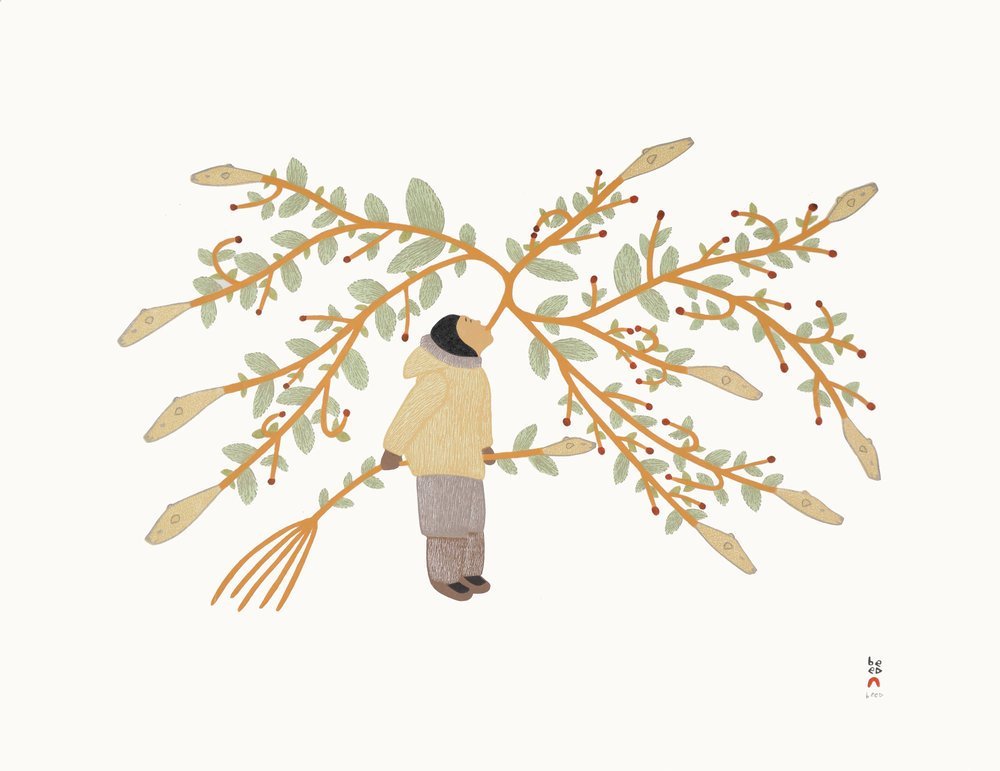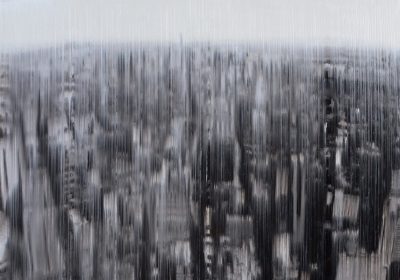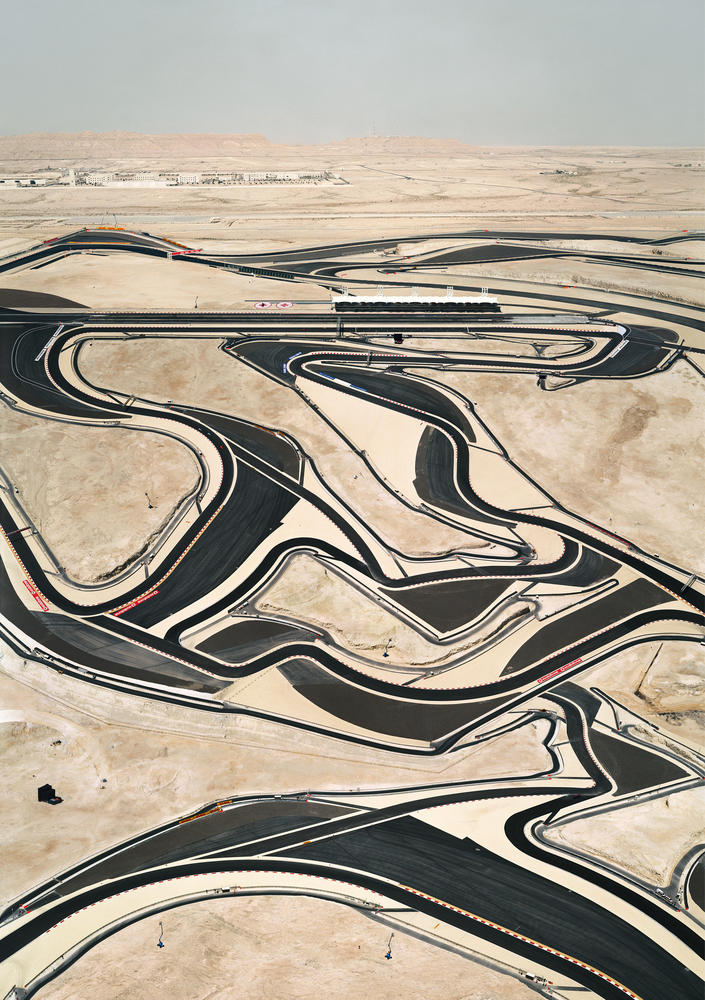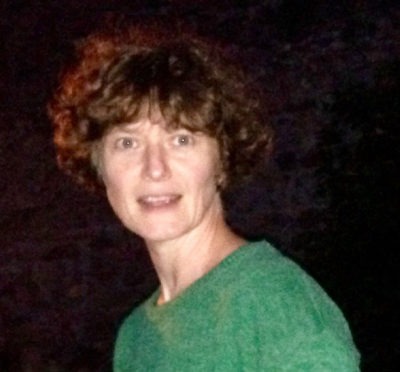Item Link: Access the Resource
Publication Info: Medium
Date of Publication: July 19
Year of Publication: 2021
Publication City: Lyon, France
Publisher: Medium - Ecole Urbaine de Lyon
Author(s): Bérénice Gagne
Volume: 05
Pages: 1
Top photo – “C19/18_050735” (detail, 2020) © Jörg Gläscher
A monthly publication by Lyon Urban School (Université de Lyon), written by Berenice Gagne, dedicated to a better understanding of global change and the Anthropocene urban world: a selection of news in many fields of study, which aims to grasp the world we live in and the world to come.
Summer 2021
A summer review that conveys numerous calls to decolonize the approach to the Anthropocene and to science. It implies a true inclusion of all peoples, all communities and their knowledge, and above all, it brings about a radical change of perspective, necessary to face the challenges of global change. Meanwhile, in the city, successive heatwaves have highlighted the ecosystem services provided by trees and the obvious inequalities in their distribution between rich and poor neighborhoods.
I wish you a beautiful summer: let’s protect ourselves and others, let’s walk in the shade, and let’s walk slowly, as prescribed by the beautiful Chinese expression that encourages us to take care. 慢走 !
Berenice Gagne
Urban School of Lyon – Watching over the Anthropocene Urban World & Global Change. Born in CO2 332ppm, my children 400 and 406
Enjoy reading or listening to original chronicles: Net Zero, Algorithms , Drink or Drive.
Check out the selection of Anthropocene Good Reads #2020: 60 books in many fields of knowledge to help understand what is happening and what is coming.
If you have any comments or suggestions to enhance this daily monitoring, feel free to share: berenice.gagne@universite-lyon.fr
Follow me on Twitter and on Instagram for a daily selection.
 “C19/18_050735” (2020) © Jörg Gläscher
“C19/18_050735” (2020) © Jörg Gläscher
URBAN
– Research highlights the link between heatwave risks and discriminatory urban planning. The notion of heat equity is emerging in urban planning. A study of 175 U.S. cities found that “in 97% of the cities, communities of colour were exposed to temperatures a full degree celsius higher, on average, than communities composed mostly of non-Hispanic white people” (nature, 14/07/2021).
– An analysis of the complex relationship of the city of Chicago (USA) with water: the city was built on swamps by betting on the stability of Lake Michigan. But climate change is disrupting these predictions with maximum and minimum phases reaching previously unknown levels, threatening the functioning and foundations of the region (The New York Times, 07/07/2021).
– “Towards a new place for the living in architectural and urban projects. Are architects able to build while preserving living environments? Questioning the notion of urban biodiversity, Léa Mosconi observes the way several architects confront it in recent exhibitions and projects” (métropolitiques, 02/07/2021).
– “Most buildings were designed for an earlier climate”. The effects of climate change may progressively undermine the essential functions of buildings, which may lead to their collapse. It is therefore urgent to adapt buildings (The Conversation, 02/07/2021).
– A study quantifies the effect of tree shade on urban heat islands using 3D modeling of an area of the city of Columbus (Ohio, USA) augmented with information on soil type (asphalt, grass, water, etc.) and satellite data (Computers, Environment and Urban Systems, July 2021). A study to be read in parallel with this article which proposes to map and count trees in neighborhoods to make environmental injustice visible: in poor neighborhoods, 41% fewer trees than in rich neighborhoods in the United States (Bloomberg CityLab, 25/06/2021).
– Contrary to the cliché of the old cities lost in the middle of the jungle devoured by the forest, “pre-colonial tropical cities were actually some of the most extensive urban landscapes anywhere in the pre-industrial world — far outstripping ancient Rome, Constantinople/Istanbul and the ancient cities of China. Extensive, interspersed with nature and combining food production with social and political function, these ancient cities are now catching the eyes of 21st-century urban planners trying to come to grips with tropical forests as sites of some of the fastest-growing human populations around the world today” (The Guardian, 22/06/2021).
– “Cities in the Age of Financialization: the growing involvement of financial actors, instruments, and rationales in the production of the urban built environment; the role of public authorities in this process; and their social, political, and spatial consequences” (metropolitics, 18/06/2021).
– An analysis of the effects of heat waves on the functioning of cities considered to be temperate: grounded planes, disrupted subways and the creation of a Chief Heat Officer position in Miami (USA) (Fast Company, 16/06/2021).
– Urban microbiology: the world’s cities each have a unique microbial signature, concludes a study of nearly 4,800 samples taken from public transportation in nearly 60 cities on all continents (Le Monde, 02/06/2021).
 “Arniniq Inuusiq (Breath of Life)” (2017) © Qavavau Manumie. Reproduced with the permission of Dorset Fine Arts
“Arniniq Inuusiq (Breath of Life)” (2017) © Qavavau Manumie. Reproduced with the permission of Dorset Fine Arts
ACADEMIC
– Université de Paris is providing 18 hours of compulsory multidisciplinary teaching in the bachelor’s degree program “based on science and technology — physics, chemistry, ecology — and on human and social sciences — history, sociology and economics of transitions” to introduce “the notions of planetary limits, the physical functioning of the climate and observations of global warming ; greenhouse gases and energy in society”; the role of fossil fuels, “the notions of ecosystem, biodiversity and ecosystem services” and “a critical perspective on the epistemic, social and political stakes of environmental transitions” (The Conversation, 29/06/2021).
AGRICULTURE & FOOD
– A study on the feasibility of an organic and sustainable agri-food system, respectful of biodiversity in Europe for a balanced cohabitation between agriculture and the environment. This scenario is based on 3 levers: a lower consumption of animal products; the generalization of long and diversified crop rotations integrating nitrogen-fixing legumes, which would make it possible to do without synthetic nitrogen fertilizers as well as pesticides; and the bringing together of crops and livestock, which are often disconnected and concentrated in ultra-specialized regions, for an optimal recycling of animal manure (One Earth, vol.4, issue 6, 18/06/2021).
– “How to make healthy food accessible to the entire population”. The Civam Network (centers for nitiatives to promote agriculture and the rural environment) criticizes food aid — “a prosthesis of the agro-industrial system” — and proposes the creation of a universal “social security of food”. “Not having the choice of food is a marker of class” (médiapart, 14/05/2021).
ARTS & CULTURES
– At the Biennale for Change in Vienna, Austria, the design studio Superflux presents the installation “Invocation for Hope”, a representation of a post-Anthropocene landscape where humans have learned to live in harmony with nature. The installation consists of a forest, composed of 415 pine trees burned in a forest fire in Austria, surrounding an oasis of living plants, lichens and mosses (Dezeen, 04/06/2021). Superflux also presents a post-anthropocene installation at the Venice Architecture Biennale. It stages a dinner between several animal species (including human) and plants, in a time after human domination. A window shows the remains of our extractive society through images of abandoned cities (Dezeen, 19/05/2021).
– The exhibition “Science friction. Living Among Companion Species” explores alternative ways of living among different species (CCCB, Barcelone, 12 June-28 November 2021).
BIODIVERSITY
– A reflection on the often forgotten political dimension of ecological restoration that reminds us of the articulation between the structure of ecosystems and the structure of societies. Instead of trying to rebuild ecosystems from before the industrial revolution, i.e. from a vanished society, “why not ask ourselves what ecosystems today’s society needs in order to face the climate and biodiversity crises?” (lundimatin, 12/07/2021).
– Repairing the world: “As the United Nations launches the Decade on Ecosystem Restoration (2021–2030), it calls on the international community to implement its commitments and restore one billion hectares of degraded land, an area larger than China”. Conservation alone is not enough to protect ecosystems because the damage is so great. However, ecosystem services are invisible and painless for the wallets of the agri-food industry and consumers (Le Monde, 03/06/2021).
– A growing body of archaeological and land use studies shows that indigenous communities have anthropized the forest for millennia and exploited its resources without endangering it (ars technica, 18/05/2021)
 “Lines of Flight op.413” (2013) © Akihito Takuma. Collection: Suzuki Design & Build
“Lines of Flight op.413” (2013) © Akihito Takuma. Collection: Suzuki Design & Build
CLIMATE
– A new study compares IPCC scenarios for no more than a 1.5°C increase in global average temperatures (the Paris Agreement target) — which are based on a model of continued economic growth — with degrowth scenarios that include considerations of equity and political and economic feasibility (Nature Communications, 11/05/2021).
DECOLONIALISM & POSTCOLONIALISM
– “5 shifts to decolonise ecological science — or any field of knowledge. Ecology has developed through a western knowledge production process that has gone hand in hand with extraction, violence and imperialism. Early European explorers and collectors were integral to the systems of colonial land management, and insights from what would become ecology have been used to justify social and environmental control” (The Conversation, 05/07/2021).
– “Dispossessed, Again: Climate Change Hits Native Americans Especially Hard: Many Native people were forced into the most undesirable areas of America, first by white settlers, then by the government. Now, parts of that marginal land are becoming uninhabitable” (The New York Times, 27/06/2021).
– How to lift half of the world’s population out of poverty while drastically reducing the use of fossil fuels? An article that demonstrates that there can be no energy transition without the fight against poverty. Historically, Europe has solved its resource shortage through colonization, locking the countries of the South into unequal exchanges. The creation of the Green Climate Fund, a financial mechanism set up by the United Nations, is supposed to respond to these injustices, but the rich countries are not providing enough money for the promised “climate financing” (9 billion dollars per year instead of 100!) (The Conversation, 28/06/2021).
DIGITAL
– “Digital economy: the mutation of contemporary capitalism”. Economist Hélène Tordjman analyzes “how the ‘Digital Revolution’ is shaping a new economic order that extends the destructive grip of industrial capitalism on nature and society” (Terrestres, 17/05/2021).
ECONOMY
– A clear statement by the European Environment Agency: “Economic growth is closely linked to increases in production, consumption and resource use and has detrimental effects on the natural environment and human health. It is unlikely that a long-lasting, absolute decoupling of economic growth from environmental pressures and impacts can be achieved at the global scale; therefore, societies need to rethink what is meant by growth and progress and their meaning for global sustainability” (European Environment Agency, 21/06/2021).
– A questioning of infinite growth and technological solutionism (techno-fix) that can also be found in this article: “The Delusion of Infinite Economic Growth. Even “sustainable” technology such as electric vehicles and wind turbines faces physical limits and exacts environmental costs” (Scientific American, 20/06/2021).
ENERGY
– An overview of our dependence on fossil fuels and the inertia of our infrastructure. “Renewable energies are only adding to fossil fuels for the moment. The construction and use of photovoltaic panels, wind turbines and electric cars could not be done today without coal, oil and gas. Indeed, it is mainly the use of fossil fuels that allows the extraction of all the raw materials required to produce and use the new energies” (The Conversation, 28/06/2021).
– What is hidden in our cars and electric bikes: in Arizona (USA), the extraction of lithium (a component of electric batteries) is monopolizing the land and threatening the ritual practices (and therefore the lives) of indigenous communities (Energy News Network, 10/06/2021).
– “For a political anthropology of energy”: an analysis of the power and politics of energy, its production, its infrastructures, its technologies, and a deciphering of the depoliticization of the energy transition (Anthropocene2050, 10/06/2021).
– A study in Nepal, Vietnam and Zambia with counterintuitive results: reducing poverty lowers energy needs. “Households that do have access to clean fuels, safe water, basic education and adequate food — that is, those not in extreme poverty — can use as little as half the energy of the national average in their country. The biggest factor is the switch from traditional cooking fuels, like firewood or charcoal, to more efficient (and less polluting) electricity and gas”. The study emphasizes the importance of investments in public services (such as electricity, sanitation, and public transport) to curb poverty and its effects (The Conversation, 03/06/2021).
 “Bahrain I” (2005) © Andreas Gursky
“Bahrain I” (2005) © Andreas Gursky
LAW
– Lawyer Philippe Sands, co-chair of the Independent Expert Panel for the Legal Definition of Ecocide and a regular counsel at the International Court of Justice, reflects on the definition of ecocide, its translation into national law and the comparison with genocide and crimes against humanity. “Crime against humanity are committed against people. The essence of that crime is the protection of people. Ecocide is committed against the environment. We wanted to make the protection of the environment an end in itself. For that reason ecocide cannot be another crime against humanity. Interestingly if you call it an ‘environmental crime against humanity’ no one cares but if you call it ‘ecocide’ people sit up and say ‘oh yes that is very important’” (Al Jazeera, 29/06/2021).
MIGRATION
– An article on the need to adapt immigration regulatory frameworks to climate change in the United States, whose analysis can largely be transposed to Europe. To date, no national immigration policy has incorporated environmental factors. Nevertheless, the authors underline the difficulty of defining “climate migration” or “climate refugee” status, as the impact of climate change is often only one factor among others that pushes people to leave, and people generally start by moving within their own country before crossing borders (The Conversation, 08/06/2021).
MOBILITY
– The documentary Black Trail, produced by the investigative media network European Investigative Collaborations (EIC), presents an investigation into the environmental impact of shipping and its resistance to any reform to reduce its footprint. “Shipping is a highly polluting sector, responsible for 3% of global CO2 emissions — and even 15% for nitrogen oxides and 13% for sulfur oxides” (Médiapart, 29/05/2021).
PHILOSOPHY, SOCIOLOGY, ANTHROPOLOGY & OPINION
– “The distinction between humans and non-humans has become an ethereal cause”: “This will to dissolve hierarchies participates in the marginalization of the most precarious individuals and colors in a new way the inequalities thus put in the green” (AOC, 30/06/2021). A reflection to be pursued with the essay “The human-the inhuman: the unthought of the new materialisms”: an epistemological analysis of the “new materialisms” or “material turn” by the anthropologist and geographer Christine Chivallon. Doesn’t the call for the overcoming of the human/non-human opposition evacuate a bit quickly the political stakes and the inhumanity that remains? (Anthropocene2050, 04/06/2021).
– “Gender and sexuality structure the climate question: an analysis of climate skepticism through the lens of feminism via the concept of “petro-masculinity.” “Fossil fuels are a central part of the dominant masculine identity, but also how the far right is gaining ground on the climate issue” (Médiapart, 22/05/2021).
 “Now What? », Digital collage (2021) © Michele Guieu
“Now What? », Digital collage (2021) © Michele Guieu
POLITICS & GEOPOLITICS
– An analysis of the European divisions intensified by climate change: floods and fires in the North, droughts, heatwaves and the decline of agriculture in the South, accentuating one of the main political fault lines of the European Union (Politico, 02/07/2021).
– An investigation on the perception and the hydraulic stakes in the Maghreb and the Middle East. A series of articles aiming to question the political choices of water management and to show their impacts on the populations (Orient XXI, 22/06/2021).
– “Is the horizon of a decarbonized capitalism the only one open to us, as the United States and China seem to assert?” Philosopher Pierre Charbonnier analyzes the emergence of this new frontier of the global economy and proposes some ways to overcome it (Le Grand Continent, 14/06/2021).
SCIENCE
– A very short column that calls for a moratorium on solar geoengineering to prioritize decarbonization policies. Indeed, for the signatories, the management of the risks and consequences of this technology would require a governance on a planetary scale which is not feasible today (Nature, 29/06/2021).
– Evaluate the transformative effects of nature-based solutions. “Various examples of nature-based solutions exist, such as restoring forests along rivers to reduce flood impacts, implementing agroforestry to increase crop resilience to climate change, or using green infrastructure in cities to reduce pollution and mitigate heat waves” (CNRS, 02/06/2021).
WASTE
– “How to curb the illegal trade in plastic waste? In 2020 alone, in OECD countries, more than 1.7 billion tons of plastic waste were illegally sent to third countries via intermediaries or ‘brokers’” (The Conversation, 13/06/2021).
– The use of flags of convenience is exploding to circumvent environmental regulations concerning the end of life of transport vessels. The dismantling of ships — which carry 90% of the goods traded in the world — generates significant and serious pollution (asbestos, mercury, lead, pesticides). The study reveals that between 2014 and 2018, 80% of commercial ships were dismantled in 3 countries — Bangladesh, India, and Pakistan — where shipyard regulations provide very little protection for workers and the environment (nature, 24/05/2021).


